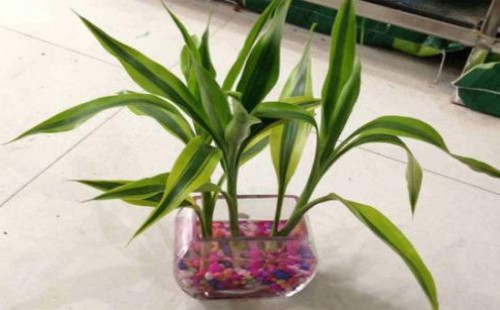How to reproduce evergreen?-the mode of reproduction of evergreen
Potted evergreen can not only add a touch of green to the room, especially in summer, but also bring people a sense of cool, but also a sense of spring. If we want to grow evergreen in pots, we need to get the seedlings first. So, how do evergreens reproduce? Evergreen can usually be propagated by sowing, cutting and ramet. Next, the editor will simply sort out the breeding way of evergreen for you.
Pot evergreen is mainly through sowing, cutting, ramet these three ways to breed young plants, as pot growers, we can according to their own reality, choose a suitable method to propagate young plants.
First, sowing and reproduction
Since it is sowing, first of all we have to get the evergreen seeds that can be used for sowing. So, how to get evergreen seeds? In fact, we can go to the flower market or the neighboring pot plant evergreen adult plant to get. The ripening period of evergreen seeds is usually from October to November every year, during which we can harvest fully mature seeds and store them and sow them at the right time in the coming year.
Before sowing, prepare flowerpots and nutritious soil in advance, then sow 3 seeds in each pot and cover it with a layer of fine soil. After watering, the flowerpot can be moved to a warm environment, which usually sprouts after a month or so, but the moisturizing work of the pot soil needs to be done at the right time. Wait for the seedlings to grow to a suitable height, directly on the pot and transplant.
2. Cutting propagation
Compared with sowing, the practice of cutting propagation of evergreen young plants is often shorter in germination time, mostly in spring and summer. When pruning branches and leaves in summer, we can cut the sturdy stems from the adult plants as cuttings. It is advisable to cut the top part of the branch about 7-10 cm in length, then cut off most of the leaves to reduce water consumption, and apply plant ash on the cut to coagulate the wound and avoid bacterial infection.
It should be noted that there are certain toxins in the juice of evergreen, which must not be directly contacted by the skin, otherwise it will irritate the skin and cause strange itching. It is usually worn by the process of cutting stems, picking leaves, and inserting cuttings. When the preparations are ready, insert the cuttings directly into the wet sand bed or nutritious soil, and then place them in a semi-shaded place.
Usually, when the temperature of the cutting environment is kept at 24-30 ℃, and when the cuttings are inserted into the soil at 1/3 stem segments, rooting, sprouting and leafing will occur in about half a month. When new buds sprout on the cuttings and begin to produce tender leaves, we should plant them in pots in time. After the plant returns to the normal growth state, it can enter the normal management procedure.
3. Ramet propagation
The propagation mode of ramet is mainly a way of propagation which is properly divided by the sprouting tillers at the base of the plant and then planted in different flowerpots. The ramet of evergreen is usually combined with basin change operation is more appropriate, because ramet is often easy to cause damage to the root of the plant, to a certain extent, affect the growth of the plant, so there is no need to deliberately split for the ramet.
When ramet, considering the toxin in its juice, like cuttings, it is recommended to wear gloves in advance. Then take the plant out of the flowerpot, cut it with a sharp blade from the joint of the plant stem, and then smear the wound with plant ash to prevent germs and prevent root rot.
After separating the seedling from the mother plant and smearing plant ash on the wound, leave it in a cool place for half a day until the root wound solidifies and dries before planting in a pot. Water some water after planting, be careful not to water too much. If all goes well, usually after a week, the seedlings can return to normal growth.
Time: 2019-06-06 Click:
- Prev

What kind of water is the best for rich bamboo?
Water-raised rich bamboo compared with soil culture, often has more advantages, mainly put it indoors can make the indoor appear cleaner, and maintenance management also appears more convenient. Therefore, many people who like rich bamboo like to raise it in water at home. However, there are some deficiencies in aquaculture, that is, the use of water.
- Next

Cutting Propagation method of Taxus mairei
The process of breeding seedlings of Taxus chinensis can be realized not only by sowing, but also by cutting technology. Compared with sowing and propagation, cuttage often takes less time to breed seedlings, so this method is also very suitable for family pot users.
Related
- Fuxing push coffee new agricultural production and marketing class: lack of small-scale processing plants
- Jujube rice field leisure farm deep ploughing Yilan for five years to create a space for organic food and play
- Nongyu Farm-A trial of organic papaya for brave women with advanced technology
- Four points for attention in the prevention and control of diseases and insect pests of edible fungi
- How to add nutrient solution to Edible Fungi
- Is there any good way to control edible fungus mites?
- Open Inoculation Technology of Edible Fungi
- Is there any clever way to use fertilizer for edible fungus in winter?
- What agents are used to kill the pathogens of edible fungi in the mushroom shed?
- Rapid drying of Edible Fungi

